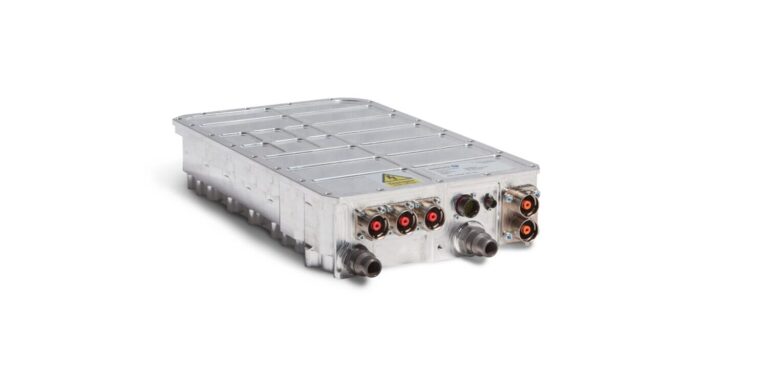UK-based Equipmake, a developer of high-performance electric powertrain components, has launched its HPI-800 inverter, a SiC-based unit which it says provides efficiency gains with the potential to reduce the size of an EV’s battery by around 10% (for a given range).
Traditionally, EVs have used inverters with insulated-gate bipolar transistors (IGBTs), which switch current at up to 20kHz. Silicon carbide (SiC) delivers significant advances, offering higher power levels, lower power losses and improved overall efficiency; in the case of the HPI-800 inverter, it can switch current at up to 40kHz.
Along with delivering gains in power and efficiency, SiC inverters are also smaller and lighter, enabling engineers and designers to take advantage of aerodynamic and packaging improvements, while also reducing the amount of cooling a vehicle might require. Their lightweight construction transforms power-to-weight ratio, too, from 40kW/kg for contemporary IGBT technology to 100kW/kg with SiC.
So far, SiC inverters have not been adopted in the mass market because of their price – but Equipmake believes this is about to change. Ian Foley, MD of Equipmake, said, “The upfront cost of a SiC inverter is more than recouped by the benefits in additional performance. In a typical high performance EV sports saloon, the associated efficiencies can reduce the size of the battery by at least 10% – or around 40-50kg.
“While they can be twice as expensive as IGBT versions, they can reduce battery size by such a large amount that the cost saving more than pays for the inverter itself. At the same time, the increase in efficiency and performance the technology can bring to an EV will enhance its natural appeal to customers.
“It’s no surprise then, that passenger battery electric vehicles (BEVs) equipped with silicon carbide inverters are forecast to overtake traditional IGBT units by 2024 and, by 2030, 95% of all BEVs will use silicon carbide. So, this is the perfect time for Equipmake to launch this new technology.”
The HPI-800 measures 494mm long, 287mm wide and 94mm high, with a mass of 12.7kg and a maximum continuous output power of up to 400KW, dependent on the motor it is paired with. It also meets ASIL-D functional safety level off-the-shelf too.


